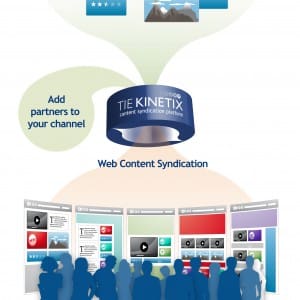Topics
Mobile-Optimized Content Becoming A New Imperative For Channel Marketers

More executives are working remotely and traveling to attend industry conferences and one-to-one meetings, making mobile-optimized content collateral a new imperative for vendors and their partners. In fact, mobile traffic has nearly quadrupled since January 2011 and accounted for about one in four web site visits in December 2012, according to research from Walker Sands.
To make the case for mobile-optimized content even stronger, Nielsen research indicates that as of December 2012, 45% of Americans own smartphones, while 25% use tablets. With these staggering results, it is evident that mobile marketing is the new must-have for organizations across the channel.
The official arrival of the mobile B2B buyer is making it imperative for vendors and their partners to offer seamless access to email campaigns, white papers, E-books and even videos via smartphones and tablets. If they don’t, channel marketers and sales teams can be faced with poor lead generation results, which will have an extreme impact on the bottom line.
Findings from the 2012 Content Preferences Survey, released by Demand Gen Report, confirmed the new need for mobile-friendly assets: 38% of buyers said they access business-related content on mobile devices more frequently than ever before. Regarding how their content consumption habits have changed, 34% of respondents said they prefer mobile-optimized content for access on a tablet or mobile device.
Because more decision-makers are demanding instant access to optimized content, “it is becoming more critical for organizations to make sure prospects receive effective messaging via mobile devices,” according to Ken Romley, CEO of Zift Solutions. While most partners currently don’t have the experience or resources to deliver mobile optimized lead generation campaigns, Romley added that vendors can improve results by providing this mobile optimization to their partner networks.
The Mobile-Email Connection
When it comes to consumer behavior and business marketing on mobile devices, the growth statistics are always staggering. Some recent research from Pew Internet, for example, show that a vast majority (87%) of smartphone owners check the Internet or email on their phones, including 68% who do so every day. As many as 25% of respondents said they “mostly go online using their phone, rather than with a computer.”
That last number is an important one. “Rather than with a computer” shows that mobile is on a fast track to be the dominant, rather than secondary, content-consumption screen.
This also is clearly a case where consumer behavior will have a direct impact on B2B buyer behavior. With 70 million people now accessing email by phone in the U.S., for example, considering mobile platforms for lead generation and other marketing tactics has gone from nice to necessary.
“Like it or not we are all already marketing on mobile devices,” said Giles House, VP at Callidus Cloud, which operates the Lead Formix platform. “There are some obvious differences between reading on a mobile and a laptop/desktop such as size and formatting, and a ‘call to action’ can be exactly that — a call now.”
House also pointed out the challenges involved in reaching mobile users. “One of the other big differences is people’s attention spans when flicking through emails on a mobile; we are almost always doing something else while trying to skim and digest a sales pitch we probably didn’t ask for,” he explained. “We have to hold the attention of our audience whatever the medium, but marketers must pay more attention when trying to reach a mobile audience.”
Grabbing The Attention Of Mobile Buyers
For B2B and channel marketers, an obvious key to “paying attention” to mobile users is the relationship between content and design. Mobile platforms play by a different set of rules for creating and presenting content, and experts agree that B2B marketers ignore these at their peril.
“Many companies are still behind and are not optimizing the web experience for mobile, which is incredibly damaging for their brands,” said Steve Woods, CTO of Eloqua. “There have been countless studies that show a consumer will abandon a web site in less than five seconds if the experience is unsatisfactory. Now that we know potential buyers are reading our emails and visiting our web sites from their mobile devices, marketers need to make the appropriate adjustments.”
“Remember that viewable real estate on mobile devices is limited – even for those that render HTML emails,” Woods said. “So, while colorful displays and large images are what we may gravitate toward to help promote our messages, keeping it simple for the sake of mobile will be beneficial in the end.”
3 Best Practices For Mobile Lead Nurturing
For marketing and sales organizations considering tools with mobile-ready features, House recommended looking at three areas where best practices have emerged.
Readability: It is important to get the readability aspect correct for the mobile environment to ensure campaign success and stickiness. All content, links, destination pages should be mobile-optimized and presented in a consistent manner.
Testing: Marketers increasingly demand the ability to test/preview content on multiple email clients and devices. Verifying cross-platform delivery should be a mandatory step in executing any new campaign.
Analysis: Marketers need to understand which prospects/customers are coming in on mobile devices; which devices they are using; and how engagement, abandonment and behavioral patterns vary across these devices. All of this data can play an important role in a marketing organization’s overall campaign analytics.














